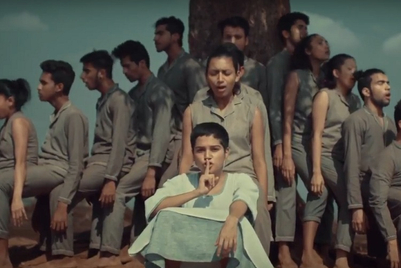Campaign India talks to two social media professionals Beth Kenter, CEO, Zoetica (pictured, left) and Gaurav Mishra, CEO, 20:20 Social (pictured, right) to understand how brands can use social media to fulfil CSR goals.
What do you believe are the positive rub-offs for brands that use social media to align themselves with a specific social cause?
Beth Kanter: Brands that use social media align themselves with a nonprofit, charity, or cause, and can reap particular benefits. These include boosting employee morale, improved reputation, and in some cases it can help the bottom line (profits). In order to benefit from these results - both intangible and tangible - the corporation needs to ensure that its social media social good effort aligns with key business objectives, solves the problem and includes stakeholder involvement (employees, and customers).
Gaurav Mishra: Brands are realizing that the big question in marketing in the 21st century isn’t “how do we get the attention of the biggest audience?” but “how do we organize and energize our evangelists?” To succeed in this new 21st century marketing, brands need to ask and answer three questions; Who are our evangelists, why will they talk about us? Second, How can we organize and energize our evangelists? Third-How can we help our evangelists spread the word? Social causes, when they define the values the brand stands for, become compelling social objects around which the brand can organize and energize its evangelists.
Could you share examples of brands that you believe best illustrate the good that can come out of aligning themselves with social causes on social media?
Beth Kanter: With the economy on a decline in USA, a lot of people needed to go to food banks to get food. So
Tyson Foods, producers of frozen chicken, geared their philanthropy towards feeding people. They have a blog where they talk about hunger relief, and announced that they would donate a truck full of food to a food bank. For every comment on their blog, they would donate 600 pounds. They got 800 comments on their blog within two hours and delivered a truck full of food. They got such a good response, they delivered another truck. It was not so much about promoting the product, but was focussed on the Food Bank and what needed to be done.
Gaurav Mishra: Tata Tea’s
Jaago Re campaign with
Janaagraha and
Aircel’s Save Our Tigers campaign with WWF India are good examples of Indian brands trying to build communities around compelling social causes. More than 650,000 first-time voters registered to vote in Jaago Re. More than 200000 people pledged to save the tigers in Save Our Tigers.
Do you recall any social media campaign for any brand that you believe was a good example of what brands should not do?
Beth Kanter: Some of the corporate social responsibility programs in the USA are wonderful. But sometimes, they don’t balance the marketing bit with the social good bit and it can tend to swing too much towards marketing. That’s fine because they have to show business results but it’s a detriment to the social good side. That’s when they don’t think towards a theory of change in terms of what social change they want to see, as opposed to just pushing their product/brand. There is one example that I can recall in this case- Chase Bank. They chose to give away $5 million, and got NGOs to compete against each other in gathering the most number of votes. They set up a Facebook page and asked the competing NGOs to ask their friends to vote for them and then picked the top ones. From that top 100 lot, they then competed for $100, 000 grants. It became not about the ideas and social change but more about ‘Vote for me, vote for me.’ That sort of thing can turn off donors. You aren’t building a relationship there.
Gaurav Mishra: Tata Tea’s Jaago Re and Aircel’s Save Our Tigers are also good examples of initiatives that did not fulfill their promise. Both Tata Tea and Aircel failed to transform their cause marketing campaigns into meaningful on-going social change communities for two reasons. Both saw their cause marketing initiatives as short term campaign, not long term programs that would redefine the DNA of their brands. Also, both focused primarily on building visibility for the causes, not on creating platforms where community members could collaborate to bring about real changes. Janaagraha is now building a location-based community platform called iJanaagraha (www.ijanaagraha.org) to enable citizens to work together to bring about change in their neighborhoods.
For brands that are looking to associate themselves with a cause, what do you believe are the primary things that they need to remember?
Beth Kanter: Brands need to listen. It’s not about going in there and blasting out your message. A lot of NGOs and brands skip that step. They don’t spend time listening. Once they’ve done the listening, they get to know who are the influential people in this space, who they need to build relationships with, and can then learn the right way to start a conversation. The next step is identifying the influencers, building relationships with them and earning their trust. The key thing to know here is not to just talk about yourself or your product. It’s about being human and establishing a connection.
Gaurav Mishra: Select a cause that can help you define the values your brand stands for and commit to it on a long-term multi-year basis. Second, partner with one or more organizations that are working to bring about sustainable change at the grassroots level. Third, create a community platform where community members can collaborate with each other and with your partner organization to bring about real changes, beyond creating, sharing and voting on content. Fourth, wherever possible, back up your commitment to your selected cause with business decisions related to partners, products and processes.



.jpg&h=334&w=500&q=100&v=20250320&c=1)
.jpg&h=334&w=500&q=100&v=20250320&c=1)

.jpg&h=334&w=500&q=100&v=20250320&c=1)


.jpg&h=334&w=500&q=100&v=20250320&c=1)


.jpg&h=334&w=500&q=100&v=20250320&c=1)
.jpg&h=268&w=401&q=100&v=20250320&c=1)






.jpg&h=268&w=401&q=100&v=20250320&c=1)
